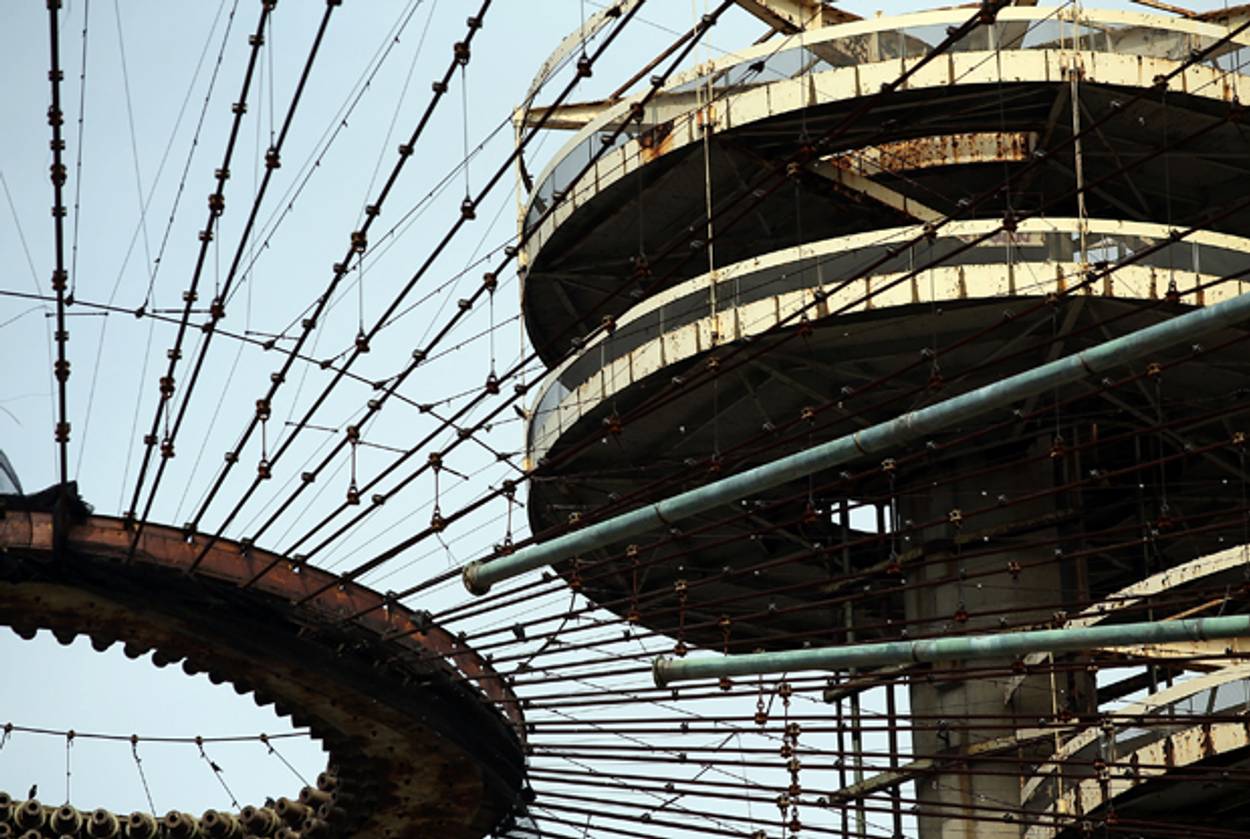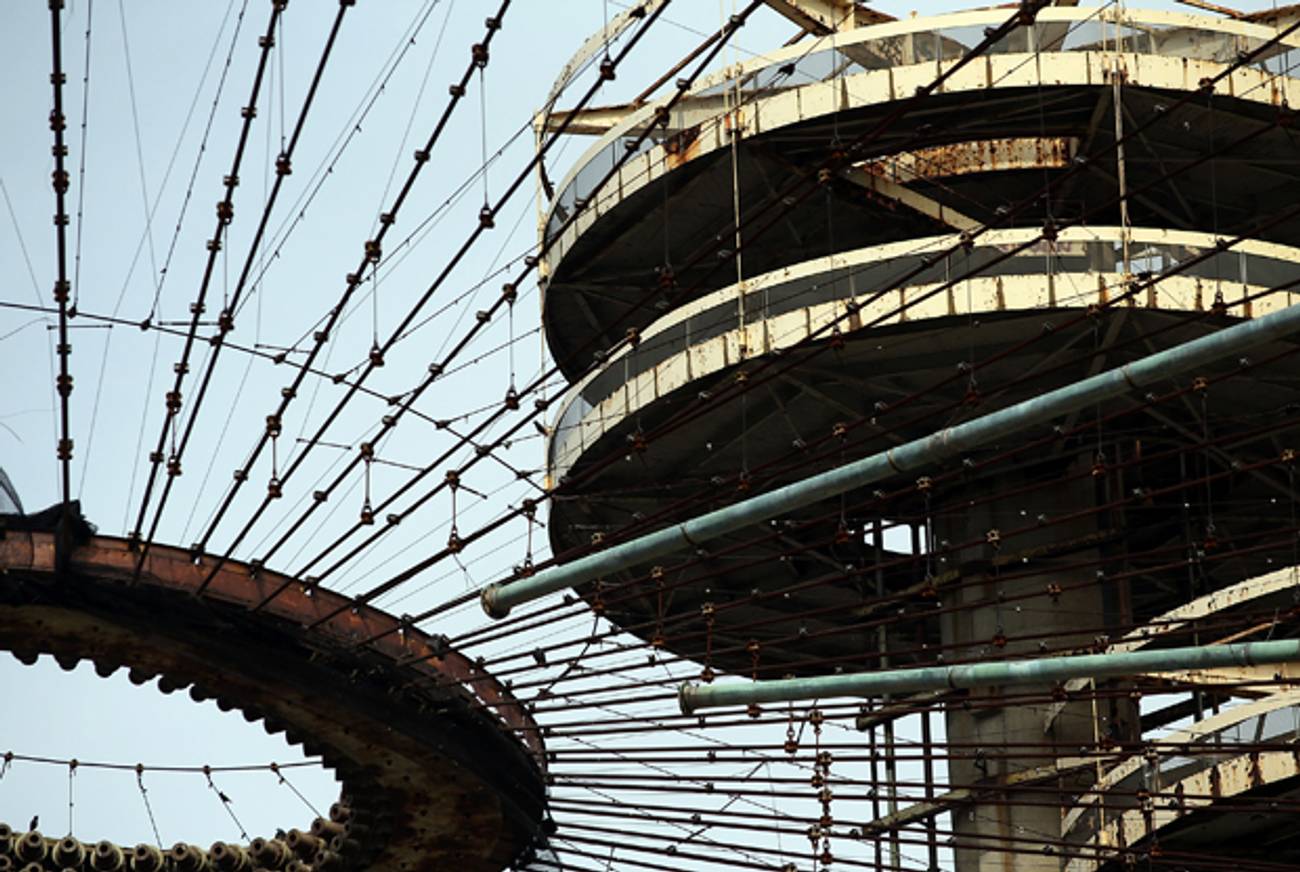When a Famous Architect Is Also an Anti-Semite
I love Philip Johnson’s buildings not in spite of him, but to spite him




Yesterday was the 50th anniversary of the opening the 1964 New York World’s Fair (and yes, that also means that Season 4 of Mad Men also took place 50 years ago, but we’ll get to that later.) In celebration of such an august anniversary, the beloved structures designed for the fair by legendary architect Philip Johnson in Flushing Meadows Park opened to the public for the first time in nearly three decades.
With people lined up around the block to see the crumbling but still imposing structures, it’s also a good time to point out some of Johnson’s less admirable achievements, notably his warm, and never renounced, embrace of fascism. As Matt Novak pointed out on Gizmodo, Johnson was an avowed anti-Semite, a man who referred to Jews as “a different breed of humanity, flitting about like locusts.” Johnson, writes Novak, “visited Germany in the 1930s at the invitation of the government’s Propaganda Ministry. He wrote numerous articles for far right publications. He started a fascist organization called the Gray Shirts in the United States. He was with the Nazis when they invaded Poland and wrote about how it wasn’t as bad as the American press was making it out to be. He was an ardent supporter of the notoriously anti-semitic Father Coughlin. And he was so in the tank for the Nazis that the FBI even suspected him of being a spy.”
Pretty bleak stuff, and obviously, you don’t need me to point out that Johnson is far from the only brilliantly creative person to secretly—or not-so-secretly—turn to be an utterly repellent human being. (Fill in your own names here; even a partial list would obliterate my word count for the day.) And I’ve written before about the curious case of designers, who, seemingly more than other creative professions, appear to be uniquely vulnerable to the lures of prejudice. When one is so ruthlessly discerning about aesthetics, might it not be only a small step to applying these principles of exclusivity to actual people? (My friend, the writer Bob Morris, explored this theme in specific regard to Johnson in his excellent play Glass House.)
The question is, should we be as quick to weed out Johnson as he would be to weed out us? Should I refuse to visit his buildings, the way our parents and grandparents were weird about buying a Mercedes?
It’s very tempting, this disqualification of art due to the failings of the artist. And yet, when we deny ourselves the appreciation of beauty, for whatever reason, we’re denying ourselves the very humanity its unpalatable creators would take from us. To refuse to appreciate the work of Wagner, or Johnson, or Celine, any of the other many, many, many artists whose virulent anti-Semitism has darkened their legacy, is to define ourselves as they would, as Jews first and human beings second. I love Johnson’s buildings not in spite of him, but to spite him, and I hope the lines of people in Flushing Meadows Park feel the same way, waiting to see the ruined structures of such beauty they might as well be a latter-day Colosseum. After all, the ancient Romans weren’t so into the Jews either.
Rachel Shukert is the author of the memoirs Have You No Shame? and Everything Is Going To Be Great,and the novel Starstruck. She is the creator of the Netflix show The Baby-Sitters Club, and a writer on such series as GLOW and Supergirl. Her Twitter feed is @rachelshukert.